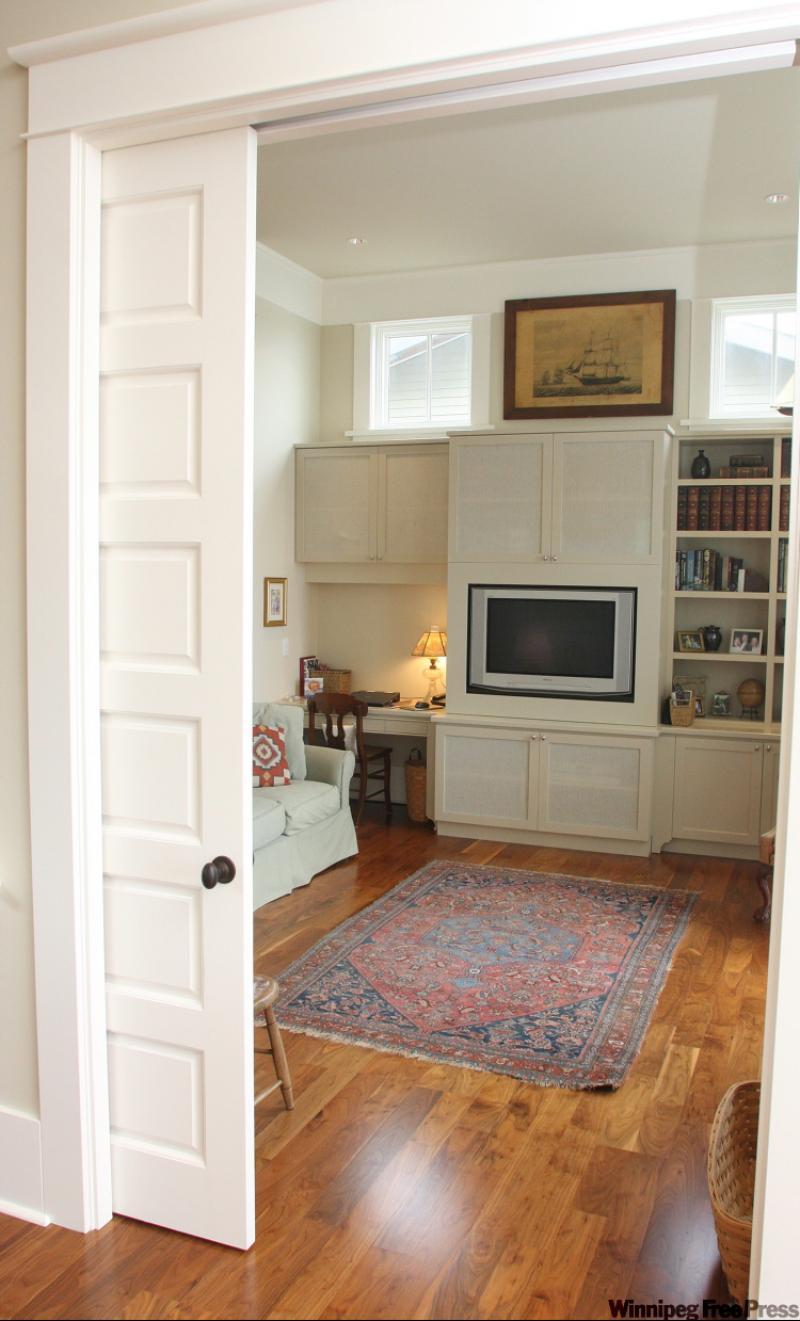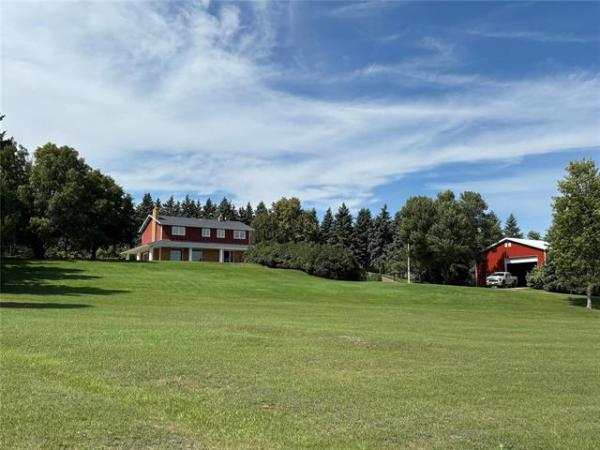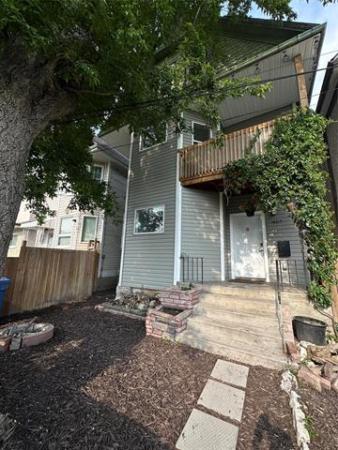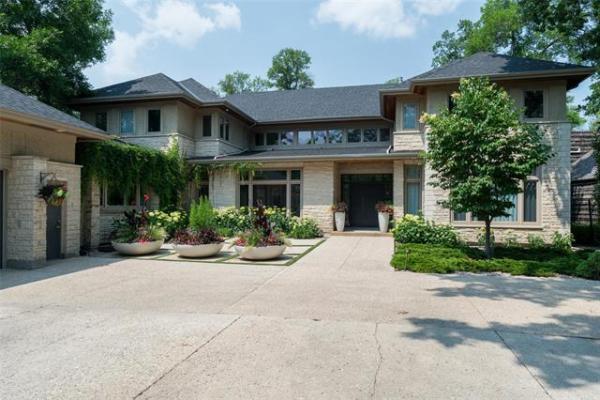
Pocket doors have been around a long time, but their traditional design also works with a modern look. But homeowners have a love-hate relationship with pocket doors. I'd like to open that door and shed some light on them.
Let's first understand the basic principle of a pocket door. The door slides on a hanging track or rail and disappears into a cavity on one side of the door frame, so that when the door is completely open, it can't be seen. It's a very streamlined and sexy interior design concept. And it's especially useful when the interior space doesn't allow for the standard hinge door, such as a small powder room, when the arc of door swing would otherwise catch on the sink or toilet.
It all sounds good, so why aren't there pocket doors everywhere?
The answer: practicality, preference and price.
On the practical side, it's a matter of space, because each door actually requires a door span that is twice as wide a traditional hinged door -- the space for the door in the closed position, and the adjoining space in the wall for the door when it's in the open position. Half of this space is actually hidden from view behind drywall. There are many situations where that extra space simply isn't available. If the house is designed to accommodate pocket doors, that's one thing; if the doors are going to be retrofit that's a whole other ball game.
In a retrofit situation, a pocket door installation becomes a challenge for the contractor. The space that will eventually become the pocket is probably already occupied with electrical such as the light switch and its wiring. There may also be other things hidden in the wall like a vent stack, plumbing or ducting.
Then comes the matter of the wall itself. It might be a structural wall, which means the framing is not something to fool around with and cut out. Even if the wall isn't structural, proper framing has its own set of challenges. Often a contractor will just rotate the studs 90 degrees to allow clearance for the door. This makes them more prone to bowing. Many homeowners who have a retrofit pocket door have experienced the frustration of when a typical home expands and contracts from winter to summer and the pocket door jams when the internal rail shifts ever so slightly.
The next consideration is personal preference. We have all become accustomed to opening doors that push or pull, not slide. Sliding requires slightly more effort to fully open a pocket door, and that translates into homeowners opting to squeeze around a semi-open door.
If you have a pocket door that is used often, it will take quite a beating and the leading edge gets dirty from hands grabbing the door itself -- and not the handle -- to push it open. The other common situation comes from people who aren't familiar with the door and, without thinking, try to open it as they would a traditional door. All that pushing or pulling eventually loosens the track hardware inside the wall.
This brings me to the final point: price. The cost of retrofitting a pocket door is high because of all the elements involved, from demolition of the existing wall to create the space for the pocket, moving existing mechanical, restructuring, framing, and installing new drywall. It's a multi-step and labour-intensive process.
There is a pocket door kit available at retailers, but the wooden structure is just for the pocket envelope and doesn't address the extra span reinforcement that should be in place. And when the door is subjected to a lot of use -- and misuse -- from door-opening-challenged people, there is no easy way to repair the rail system. The drywall hiding the pocket would need to come down.
Don't get me wrong. I still like the idea of a pocket door. And there is a better way to build a pocket door that addresses some of the potential problems, but it requires the wall enclosed around the pocket be thicker to accommodate a standard two-by-four stud frame on both sides of the pocket. The idea is to have enough structure to resist any unwanted movement and prevent the wall from bowing and the door jamming.
Pocket doors aren't for everyone, and the trick is to put them in locations where they are best suited -- where a traditional hinged door won't work and in doorways that only see light to moderate usage. A great location is on closet doors -- a far more elegant solution than the old bifold door. Remember to focus on making sure the guts of the project are correct, and your pocket door won't end up going off the rails.
-- Canwest News Service
Catch Mike in his brand-new series, Holmes Inspection, airing Thursdays at 8 p.m. ET/PT on HGTV. For more information visit www.hgtv.ca.
Do you have a question about home renovations? Email mike@makeitright.ca.



